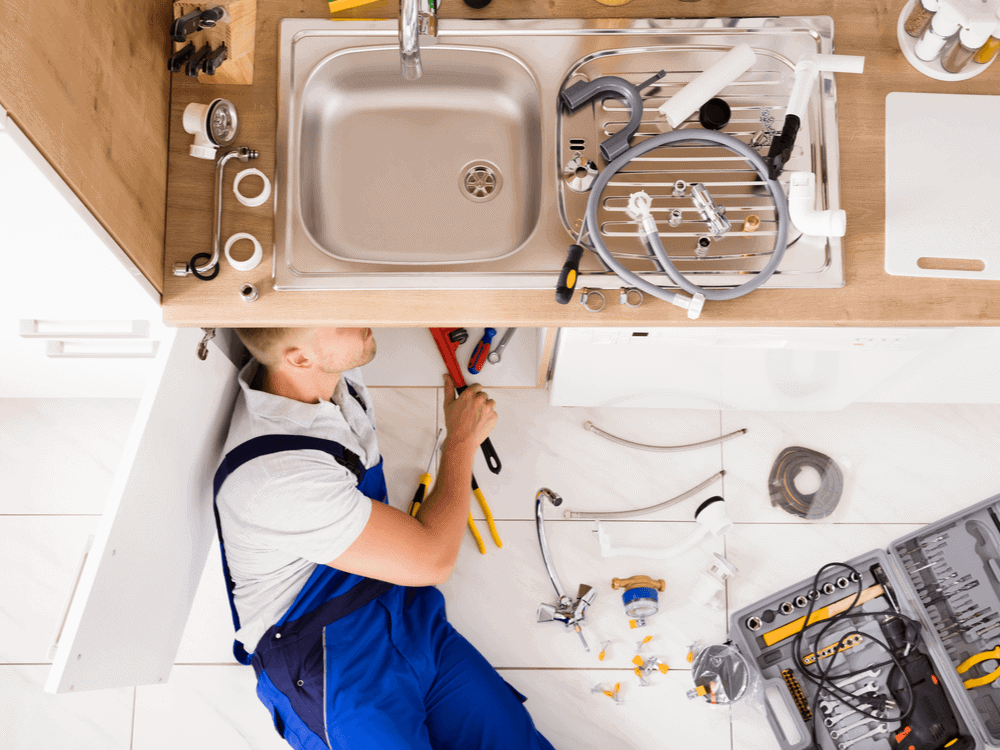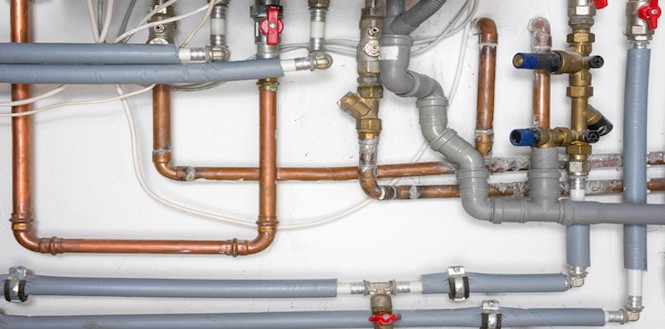Key Components of Your Home's Plumbing System
Key Components of Your Home's Plumbing System
Blog Article
Every person seems to have their private thinking involving Exploring Your Homes Plumbing Anatomy.

Comprehending just how your home's pipes system works is crucial for every single property owner. From providing tidy water for alcohol consumption, food preparation, and showering to safely removing wastewater, a well-maintained plumbing system is important for your family's health and wellness and comfort. In this comprehensive overview, we'll discover the detailed network that comprises your home's pipes and deal tips on maintenance, upgrades, and taking care of usual concerns.
Introduction
Your home's pipes system is greater than just a network of pipes; it's an intricate system that ensures you have access to tidy water and effective wastewater elimination. Knowing its parts and exactly how they collaborate can help you stop pricey repairs and guarantee everything runs efficiently.
Standard Parts of a Pipes System
Pipes and Tubes
At the heart of your plumbing system are the pipes and tubes that bring water throughout your home. These can be constructed from numerous materials such as copper, PVC, or PEX, each with its advantages in terms of resilience and cost-effectiveness.
Components: Sinks, Toilets, Showers, etc.
Components like sinks, bathrooms, showers, and bathtubs are where water is made use of in your home. Understanding just how these fixtures link to the plumbing system helps in identifying troubles and preparing upgrades.
Shutoffs and Shut-off Points
Shutoffs manage the flow of water in your plumbing system. Shut-off shutoffs are critical throughout emergency situations or when you need to make repair services, permitting you to isolate parts of the system without disrupting water circulation to the entire house.
Supply Of Water System
Main Water Line
The primary water line connects your home to the community water supply or a private well. It's where water enters your home and is distributed to various fixtures.
Water Meter and Pressure Regulator
The water meter steps your water usage, while a pressure regulatory authority makes certain that water flows at a risk-free stress throughout your home's pipes system, avoiding damages to pipelines and components.
Cold Water vs. Hot Water Lines
Recognizing the difference between cold water lines, which provide water straight from the primary, and warm water lines, which carry heated water from the hot water heater, aids in troubleshooting and preparing for upgrades.
Water drainage System
Drain Pipes Pipeline and Traps
Drain pipelines carry wastewater away from sinks, showers, and bathrooms to the sewage system or sewage-disposal tank. Traps avoid sewer gases from entering your home and also catch debris that can create obstructions.
Ventilation Pipes
Air flow pipes allow air into the drain system, preventing suction that can reduce water drainage and create traps to vacant. Proper air flow is essential for maintaining the honesty of your plumbing system.
Value of Proper Water Drainage
Making certain correct water drainage prevents back-ups and water damages. Consistently cleansing drains and maintaining traps can stop costly repair services and expand the life of your plumbing system.
Water Heating Unit
Kinds Of Water Heaters
Hot water heater can be tankless or conventional tank-style. Tankless heaters warmth water on demand, while storage tanks save warmed water for instant use.
Upgrading Your Pipes System
Factors for Updating
Upgrading to water-efficient fixtures or changing old pipelines can boost water high quality, decrease water expenses, and increase the value of your home.
Modern Pipes Technologies and Their Advantages
Explore innovations like smart leakage detectors, water-saving commodes, and energy-efficient water heaters that can conserve cash and reduce environmental impact.
Cost Factors To Consider and ROI
Calculate the upfront expenses versus long-term savings when considering pipes upgrades. Many upgrades pay for themselves via minimized utility expenses and fewer fixings.
How Water Heaters Link to the Pipes System
Understanding just how water heaters link to both the cold water supply and hot water distribution lines aids in diagnosing problems like inadequate hot water or leakages.
Maintenance Tips for Water Heaters
Regularly flushing your hot water heater to get rid of sediment, inspecting the temperature settings, and checking for leakages can prolong its life expectancy and enhance energy performance.
Usual Plumbing Concerns
Leaks and Their Reasons
Leaks can happen because of aging pipelines, loose fittings, or high water pressure. Addressing leaks quickly avoids water damage and mold development.
Clogs and Clogs
Clogs in drains pipes and toilets are commonly triggered by flushing non-flushable products or a build-up of grease and hair. Utilizing drain displays and bearing in mind what goes down your drains can protect against obstructions.
Indications of Plumbing Issues to Watch For
Low tide pressure, slow drains pipes, foul odors, or unusually high water expenses are indicators of prospective plumbing issues that ought to be addressed promptly.
Plumbing Upkeep Tips
Normal Assessments and Checks
Set up annual plumbing inspections to capture issues early. Try to find indicators of leakages, deterioration, or mineral build-up in taps and showerheads.
DIY Maintenance Tasks
Easy tasks like cleansing tap aerators, looking for commode leaks using dye tablet computers, or shielding subjected pipes in cool climates can avoid major pipes concerns.
When to Call an Expert Plumbing
Know when a plumbing issue requires professional competence. Trying complex repair services without correct knowledge can lead to more damage and higher repair service expenses.
Tips for Minimizing Water Use
Simple habits like taking care of leaks promptly, taking much shorter showers, and running complete tons of laundry and recipes can conserve water and reduced your utility costs.
Eco-Friendly Plumbing Options
Think about sustainable plumbing products like bamboo for flooring, which is durable and green, or recycled glass for countertops.
Emergency situation Preparedness
Actions to Take Throughout a Pipes Emergency situation
Know where your shut-off shutoffs are located and just how to switch off the water in case of a ruptured pipe or significant leak.
Relevance of Having Emergency Situation Get In Touches With Convenient
Keep contact info for regional plumbing professionals or emergency situation services readily available for quick reaction throughout a plumbing crisis.
Ecological Effect and Conservation
Water-Saving Components and Devices
Installing low-flow taps, showerheads, and bathrooms can significantly reduce water use without compromising efficiency.
Do It Yourself Emergency Situation Fixes (When Appropriate).
Momentary solutions like using duct tape to patch a leaking pipe or placing a bucket under a leaking tap can lessen damages up until a specialist plumbing shows up.
Conclusion.
Recognizing the composition of your home's pipes system equips you to keep it effectively, conserving money and time on repairs. By following routine upkeep routines and staying notified about modern-day pipes technologies, you can guarantee your plumbing system operates successfully for years to find.
Exploring Your Homes Plumbing Anatomy
Water Supply System
Main Water Line: This is where water enters your home from the municipal supply or a private well. Water Meter: Typically located near where the main water line enters the property, it measures the amount of water used. Shutoff Valve: It s crucial to know where this is in case of emergencies. It allows you to turn off the water supply to the entire house. Pipes and Fittings: These distribute water throughout your home. Materials can include copper, PVC, or PEX. Drain-Waste-Vent (DWV) System
Drains: Located in sinks, showers, and tubs, these carry wastewater away. Traps: U-shaped pipes under sinks that hold standing water, blocking sewer gases from entering the home. Vents: Pipes that lead from the DWV system to the outside, preventing vacuum formation and allowing gases to escape. Sewer Line: Carries all wastewater from the home to the municipal sewer system or a septic tank. Fixtures and Appliances
Sinks, Toilets, and Showers Dishwashers and Washing Machines Water Heaters Maintenance Tips
Regularly check for leaks in exposed pipes and around fixtures. Inspect the water heater annually for signs of wear. Clean drains and traps to prevent clogs and odors. Know how to shut off water to individual fixtures. When to Call a Professional
Major leaks or burst pipes Installation of new pipes or fixtures Septic tank issues Remodeling projects that involve plumbing changes Conclusion
Understanding the anatomy of your home's plumbing is key to maintaining a functional and efficient system. Regular checks and knowing when to call in the experts can save you time, money, and stress.
https://www.mavyn.com/blog/exploring-your-homes-plumbing-anatomy

Do you really like reading about Plumbing Installation 101: All You Need to Know? Leave a remark directly below. We'd be pleased to see your ideas about this entry. We hope to see you back again in the near future. Sharing is good. You never know, you will be helping someone out. I truly appreciate your readership.
Click Here Report this page